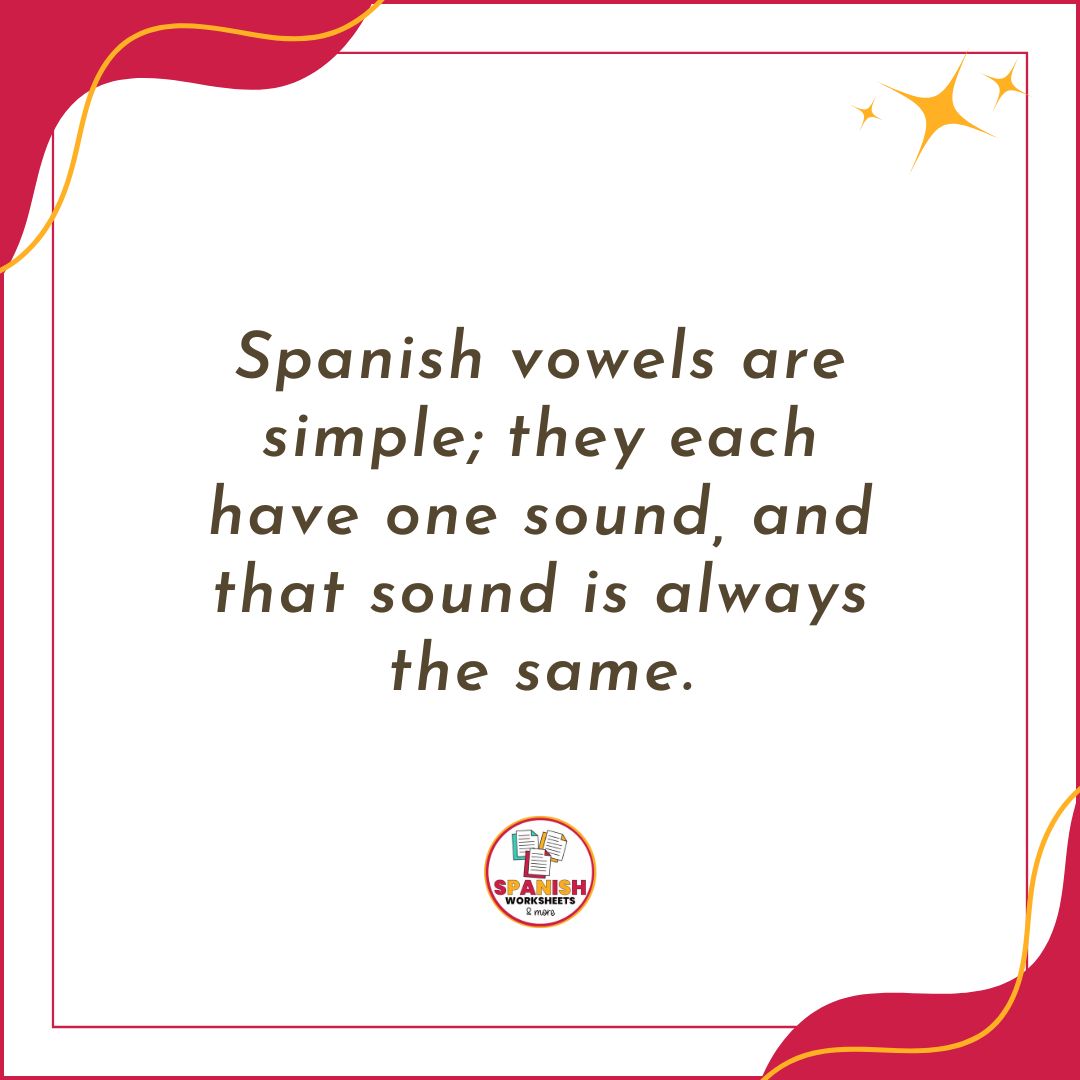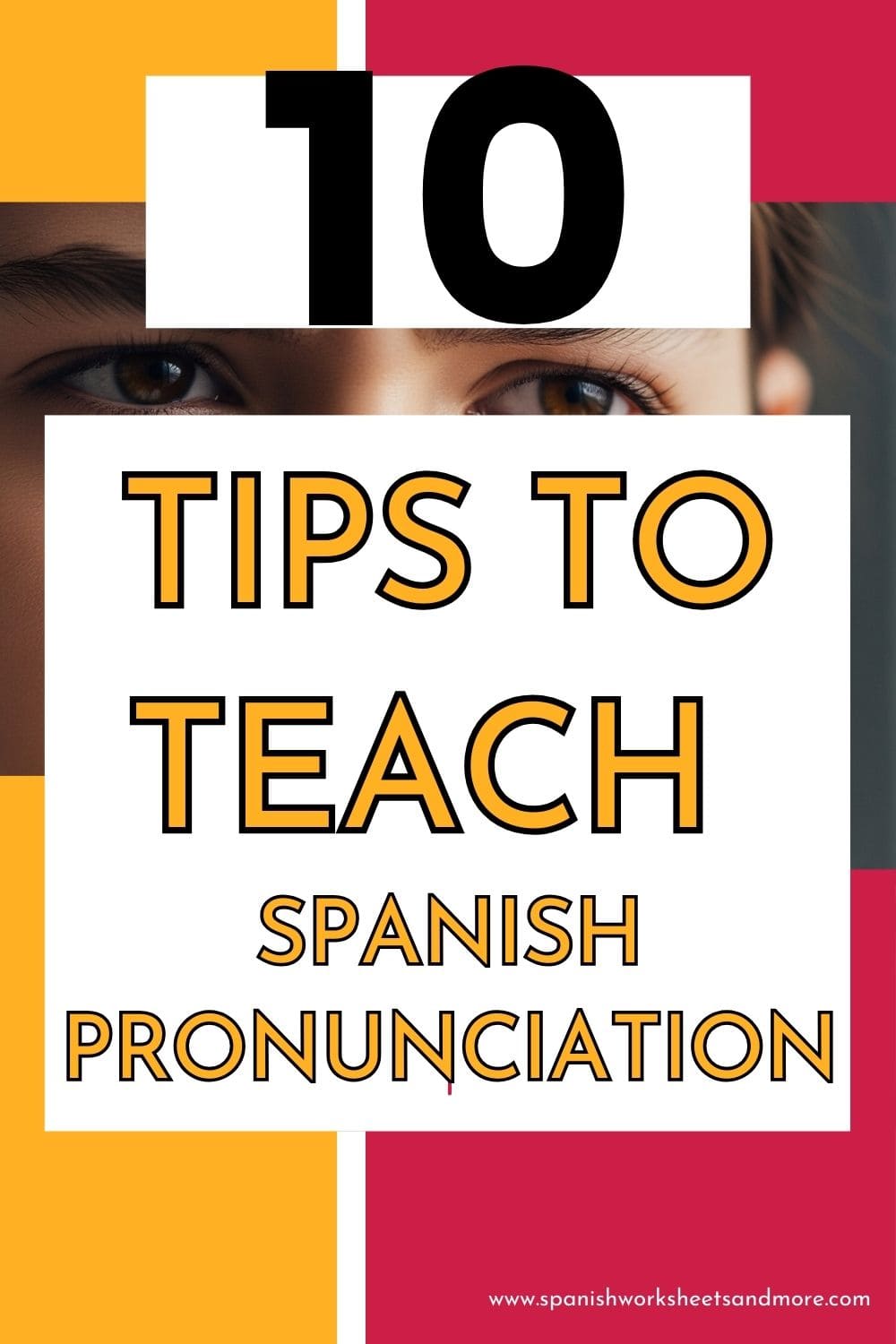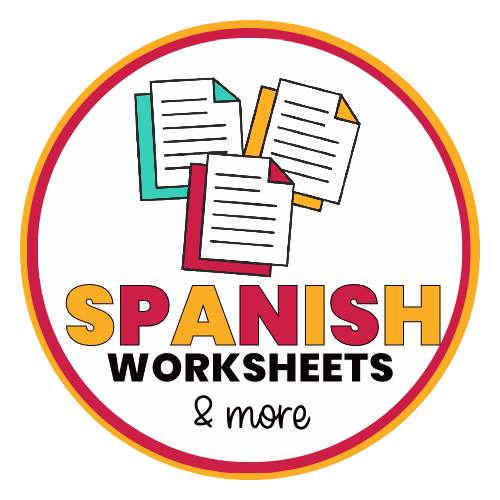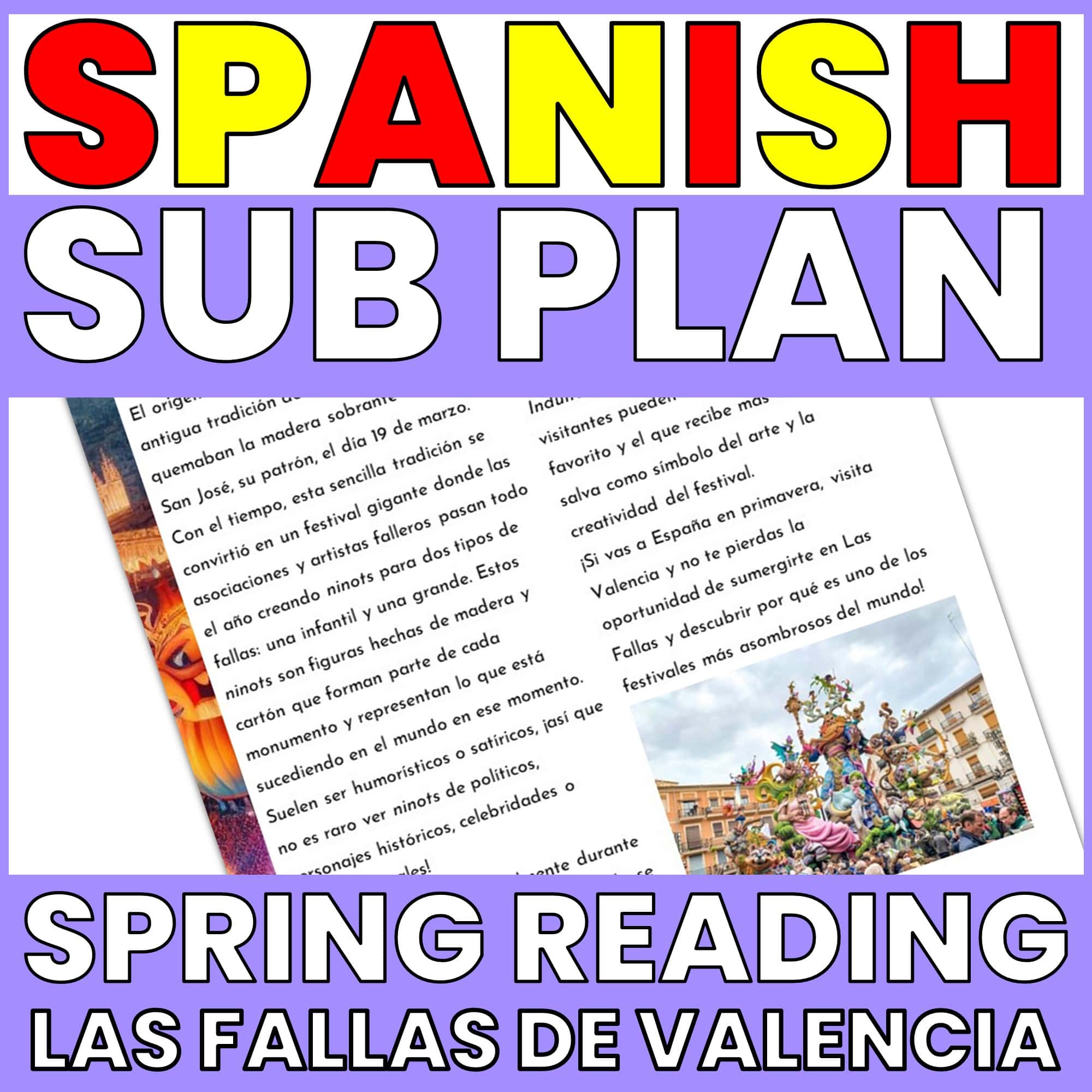You know that moment in class, right? The one where your students are introducing themselves and they say “me llamo” and it rhymes with “arrow", worse still, they pronounced the LL as an L. Honestly, we've all been there. It’s a common struggle for English speaking students, and we might all feel like cringing at the start, but here’s the thing: you can totally help your students move past that. And wouldn’t it be a relief if they could sound more confident and authentic? With these tips to teach Spanish pronunciation, that's exactly what you can do.
More...
By the way, if you’re getting ready for the new school year, kicking things off with pronunciation is a fantastic idea. You can also grab some inspiration from my post on Back to School Spanish Activities for more great ideas to get your classroom buzzing.
Disclosure: This post may contain affiliate links. As an affiliate for Amazon and other companies, I earn from qualifying purchases. This means that if you click on a link and make a purchase, I may earn a small commission at no additional cost to you.
This is a list of tips to help you teach Spanish pronunciation effectively, but it won't give you tips on how to teach each sound. That would take forever!
Teaching pronunciation in Spanish class is not about endless, boring drills. Instead, how about we teach how to pronounce Spanish sounds with a few key rules and give your students the right tools?
Because teaching pronunciation isn't just about practicing individual Spanish sounds—it's about a more complex approach that involves rhythm, stress, and how sounds connect, which all contribute to fluency in Spanish. These 10 tips to teach Spanish pronunciation can make a huge difference in your classroom, helping your students move past their English accent and find their own Spanish voice.
Tip 1: Vowels Are Your Superpower: The Easiest Way to Teach Spanish Sounds
Trust me, this is where you can give your students an immediate confidence boost. Why? Because unlike English, Spanish vowels are wonderfully consistent. You can tell them: "Spanish vowels are simple; they each have one sound, and that sound is always the same." It's a huge relief for them! Then, you can use a song like "Borriquito como tú" or a similar song to practice. Sing the vowels out loud together so they can hear and feel that single, clean sound every time. And hey, you could even display a set of Spanish Alphabet Posters in your classroom to reinforce the sounds all year long—you'll love how easy this is.
Tip 2: The Diphthong Slide: A Key Spanish Pronunciation Tip
Once your students have the five single vowel sounds down, you can introduce diphthongs. It sounds a bit tricky, but it’s totally doable and a key Spanish pronunciation tip that helps them sound more fluent. You can explain it like a 'vowel slide'—you take a strong vowel (a, e, o) and a weak vowel (i, u) and glide them together in one seamless motion. For example, in the word viento, you don't pronounce the i and e separately, the i is softer and slides into the e, and behaves a little like a consonant.
Other words you can use are:
Aire
Bueno
Estudio
Europa
Auto
Seis
Oigo
Numbers are also excellent words to practice the sounds and this I have Who Has Numbers activity will get them practicing their pronunciation with numbers 0-30. For more fun number activities check out this blog post.
Tip 3: A Spanish Pronunciation Tip: The Art of Chopping Syllables
Honestly, when students see a long Spanish word, and Spanish has maaaaany long words, their first instinct is to panic. Indeed, many of my students tried the tactic of saying everything really fast so I wouldn't notice they didn't pronounce things properly!
But this is where you can teach them a neat trick: just "chop" it.
You can literally use a chopping motion with your hand to show them how to break a word down into manageable syllables. For example, with universidad, you can say it together, chopping each syllable: u-ni-ver-si-dad. Practice as well with words with diphthongs, like es-tu-dian-te, as-tro-nau-ta.
It makes even the most intimidating words feel a lot less scary, don’t you think?
You can even use clapping or rhythm sticks to make it a fun, active game.
And it doesn't matter how young or old your students are, this works for children, teenagers and even adults!

Tip 4: Mind Your Stress (and Use Your Hands!)
This is another simple tip that will help your students become better at Spanish pronunciation. Once your students can chop a word into syllables, you can teach them where to put the stress. You can use a physical signal: a big, exaggerated hand motion or a clap on the stressed syllable. You can practice with common words, like español (es-pa-ÑOL), profesora, autobús, plátano... This kinesthetic activity helps them really remember where the emphasis goes, which is key for sounding natural.
Tip 5: The Flow of Spanish (Joining Words): A Crucial Strategy for Native-Like Speaking
Have you ever noticed how different English and Spanish sound? People always tell me that Spanish people speak very fast and it’s true for some of us, but this is where you can introduce the concept of linking or joining words to create a more natural rhythm. You can use the example "al alba" (at dawn), which is not said as al-alba but as a single, smooth sound: a-lalba. A great activity for this is using songs or authentic audio and having students listen for when words connect.
Give them short sentences and ask them to read them without stopping or ask them to record themselves.
I'm used to working with a language lab for this type of thing, but a voice recorder is also very handy.
You can get students in small groups to record themselves and play it back, which gives them immediate, personal feedback on their fluency and and where their words are linking together. Or you can use their own phones if you allow them in class.
Tip 6: One Sound at a Time: A Smart Approach to Teaching Spanish Sounds
Now that they have the fundamental rules, you can move on to the tougher sounds. It's so tempting to try and correct every single pronunciation mistake as it happens, but that can be overwhelming for both you and your students.
A good piece of advice?
Focus on one specific sound or sound combination at a time. On Monday, maybe you can dedicate five minutes to the Spanish 'R' sound. On Tuesday, you might tackle how to pronounce "G" and so on. By narrowing the focus, you’re not just correcting; you're actually teaching a targeted lesson that's easy for them to remember.
Why not pick 3 to 5 words you can use at the beginning of a class and ask them to practice pronunciation as a little warm-up exercise?

Tip 7: Tongue and Lips: Physical Tips for Teaching Spanish Pronunciation
For some of the more challenging Spanish sounds, like the 'R' sound, you have to get students to think about the physical mechanics. It's a bit silly, but trust me, it works. Remember that famous scene in My Fair Lady where Professor Higgins gets her to speak with a mouthful of marbles? Well, when I was little I always wondered if my teacher got her inspiration from that film!
Don’t tell anybody, but she made me speak with marbles in my mouth because she said I mumbled. I was just shy, honestly!
Anyway, this is something I also liked to do with my students. But since you probably don’t have a bag of marbles handy, a pen or pencil will do.
You can ask them to notice where their tongue and lips are positioned when they say a word like perro vs when they say cara, and see if they can figure out how to make the two different sounds.
This is excellent practice for sounds that are very similar in English and Spanish, but have a small, crucial variation, like the sounds for t and d.
I also love illustrating with my hand how the tongue moves. You can use your hand to show them how the tongue moves and curls, and then they have to imitate the movement with their own tongue.
It’s simple, and effective. Just make sure you have plenty of wipes nearby, because there might be some dribbling!
Tip 8: The S Sound: A Little Tip To Help Your Students Feel The Difference
This is one of those simple Spanish pronunciation tips for beginners that works like magic. Many students pronounce 'S' in many words with a buzzing sound. To fix this, and get students to focus on making the unvoiced S sound is to make your students place their hand on their throat.
If they pronounce the Spanish 'S' correctly, they won’t feel any vibration from their vocal cords. But when they make the buzzing sound, they'll feel a clear buzz. It’s a simple, physical cue that helps them feel the difference instantly.
Another fantastic tool to help with self-correction, many teachers love using something like the Toobaloo Auditory Feedback Phone. It’s a simple "whisper phone" that helps students hear themselves clearly as they speak, making it easier for them to self-correct and build confidence. It´s usually used to teach children to read, but it´s also a fantastic low-tech tool to teach pronunciation.
The Z and C Sounds: Another Essential Spanish Pronunciation Tip
In Spain, the 'z' and the 'c' (before an 'e' or an 'i') are pronounced with a 'th' sound—like in the English word 'thin.' This is not a lisp, it's the correct pronunciation in Castilian Spanish! You can get students to practice this by using your hands to mimic a tongue coming between teeth. A great exercise is to have them say the Spanish numbers cero, once, trece, and dieciséis. The more they practice, the more natural it will become.
Tip 9: Hear the Difference: Minimal Pairs for Spanish Language Teaching
This is a fantastic, comprehensive activity to put all the tips together. You can use minimal pairs to help students hear subtle differences that make a big impact. You can practice pairs like pino and piña so they can hear the change from the n sound to the ñ. For example:
Vowel Differences
- la pala (the shovel) vs. la pila (the battery)
- el peso (the weight/coin) vs. el piso (the floor)
- la meta (the goal) vs. la mitad (the half)
Consonant Differences
- el perro (the dog) vs. pero (but)la parra (the vine) vs. para (the preposition)
The n vs. ñ Sound
- el pino (the pine) vs. la piña (the pineapple)
The s vs. z Sound
- This is one of the most important differences in Spanish pronunciation and a great way to help students sound more authentic. Practice with a minimal pair like la casa (the house) vs. la caza (the hunt).
Other Common Trouble Spots
- The "L" sound (and "LL"): This has a small, easy fix: tell students to imagine the tip of their tongue is glued to the roof of their mouth just behind their teeth for the Spanish 'L.' Then, for "LL," explain that the tongue rounds upwards a bit and then sticks to the roof of the mouth. You could suggest a quick activity where they practice minimal pairs like "llamo" and "lamo" (I lick). This is a fun, playful way to get them to hear and produce the difference.
- The "J" sound: Compare it to the sound of clearing your throat. It's a fun, slightly silly analogy that sticks. Words like "juego," "trabajo," and "rojo" are perfect examples.
Tip 10: The Cognate Connection: Your Secret Pronunciation Tool
When your students are starting out, they often get a big boost from seeing words that look just like English words—those are the cognates! But it's a great opportunity to get them to listen and feel for the differences in pronunciation, too.
For example, when they see a word like 'familia,' they already know what it means. Now, you can point out that even though the word looks familiar, the sound is different. The 'a' at the end is a clean, open vowel sound. The 'i' is a long ee sound that glides into the 'a', not a short ih sound.
Use lists of cognates and have them practice saying them out loud, focusing on a specific sound you've been working on. Here are a few to get you started:
- 'Actor' (the Spanish 'o' is a cleaner sound than in English)
- 'Problema' (the stress is on the second-to-last syllable, not the first)
- 'Hospital' (the 'h' is silent! and the stress is on the last syllable)
- 'Inteligente' (focus on the clean vowel sounds and the way letter 'g' sounds before 'e' and 'i')
- 'Celebración' (the 'c' before 'e' or 'i' makes an 'th' sound in Spain but 's' sound in Latin America, and the stress is on the final syllable)
This activity helps them transfer their existing knowledge while building new habits. They'll start to notice those subtle shifts in pronunciation on their own, and it's a huge step toward sounding more natural.
TIP: Put a cognate on the board as a quick warm up each day and have students practice saying it correctly.
Now, What Are Your Go-To Tips to Teach Spanish Pronunciation?
These small, focused strategies for teaching how to pronounce Spanish like a native can change the way you approach Spanish pronunciation in your classroom. You'll find your students now have a clear roadmap for success, and you'll have a set of go-to Spanish language teaching resources and activities that are both effective and engaging.
Looking for more ways to make Spanish feel accessible? You'll love my post on How to Teach Spanish Cognates to help your students see the connections between Spanish and English vocabulary right away! And for a more comprehensive list of gadgets and items you need in your Spanish classroom, check out my blog post about ESSENTIAL Spanish classroom supplies!
I hope these tips to teach Spanish pronunciation are just as helpful for you!
What's one tip or strategy you've used in your classroom that your students love? Let me know in the comments below!





0 comments